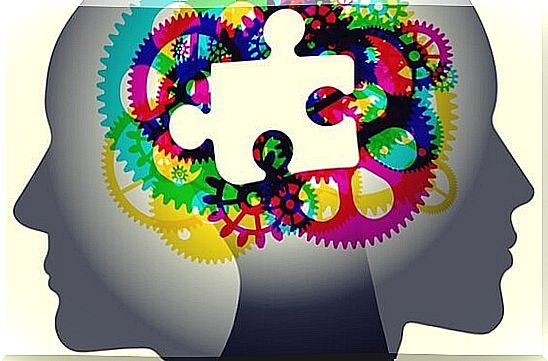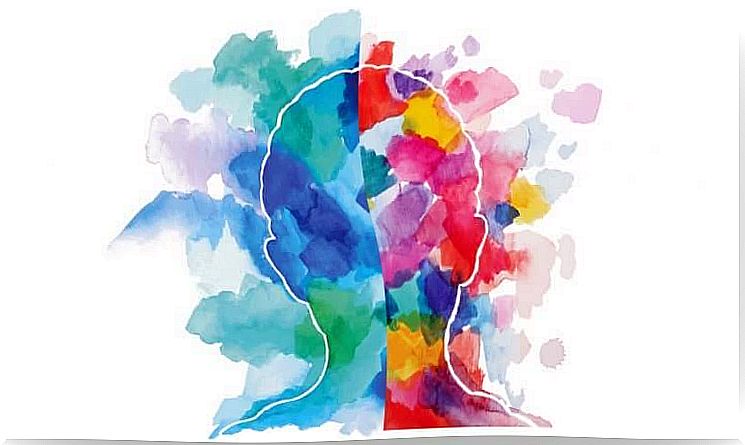5 Personality Tests To Find Yours

Indeed, we have all, at some point in our life, taken a personality test. Whether as part of a selection process, for clinical purposes, or out of personal interest, personality tests are unquestionably very common in most social settings. However, it is necessary to s e remember that there are more valid tests than others. And that we also have to be demanding with these tools if we really want to obtain reliable information.
It is therefore interesting to know that psychological practice generally has two very specific types of personality tests. The first are the classic psychometric tests, in other words those based on a cognitive-behavioral current and where we assume that people will be sincere when they answer each of the items.
The second typology are the very interesting projective personality tests. These are tests where the subject projects unconscious elements and internal conflicts that are not recognized by exercises of a creative or introspective nature. These tests are very useful especially in clinical practice, forensic medicine or with children. We will indicate below which are the most used personality tests to define, understand and describe our interesting personal universes.

1. Personality test: the Big 5 model
Although not exactly a personality test, the “big five” model is one of the most recognized. And, in addition, the one that lays the foundation for a large number of tests aimed at understanding and measuring human behavior . This approach to personality is divided into five main areas, into five dimensions known by the acronym “OCEAN”:
- Openness to experience (openness to experience)
- Conscientiousness (responsibility)
- Extroversion
- Agreeableness (kind)
- Neuroticism (neuroticise)
This test is generally applied in many areas with considerable success. From the clinical field to human resources departments in order to select staff. Until being used by educational advisers who see this model as a very effective framework for suggesting to students the professional profiles that can best adapt to their characteristics.
2. The 16PF questionnaire
The 16PF questionnaire is one of the most popular and widely used. It is the result of decades of work and analysis by Raymond B. Cattell, a British psychologist known for his important contributions in the field of personality and especially intelligence. It was he who proposed, for example, the existence of a fluid intelligence and a crystallized intelligence.
This personality test has been continuously revised and updated, but its essence remains the same. Study our personality traits based on 16 main factors and five secondary factors:
- A (Affection)
- B (Reasoning)
- C (Stability)
- E (Dominance)
- F (Impulsivity)
- G (Group compliance)
- H (Audacity)
- I (Sensitivity)
- L (Suspicion)
- M (Imagination)
- N (Cunning)
- O (Guilt)
- Q2 (Self-sufficiency)
- Q3 (Self-control)
- Q4 (Voltage)
3. The Myers-Briggs indicator
The Myers-Briggs Type Indicator is a well-known personality test based on Carl Jung’s work in this area. The test itself was developed by Katharine Cook Briggs and her daughter Isabel Briggs Myers. However, it should be noted that despite its strong popularity, this test is infrequent in clinical practice. Because it is a tool of little use in this area.
The scale measures only two dimensions: extraversion and introversion. Although this indicator is of little clinical or forensic value, it is not the same in the area of personal growth or the school and professional environment. The information that the Myers-Briggs indicator can provide us with is as follows:
- Understanding how we focus our attention and obtain our energy (extraversion or introversion)
- Knowing how we perceive or process information (sensation or intuition)
- How we make decisions (thought or feeling)
- How we orient ourselves towards the outside world (through more logical-rational judgments or more emotional perceptions)
4. The Minnesota Multiphasic Personality Inventory (MMPI)
The MMPI (Minnesota Multiphasic Personality Inventory) is one of the most popular and common personality tests in clinical, forensic, and personal practice. It is also interesting to know that this test offers us a fairly faithful profile of the personality of each subject or patient. It is also very suitable for detecting various psychopathologies.
Therefore, the MMPI measures individuals on a wide variety of scales, including depression, cynicism, schizophrenia, anxiety, anti-social behavior, mania and paranoia, etc.
5. The Rorschach test
We’ve all heard of the Rorschach test. Because of its cinematic representation, it is considered to be the personality test that every psychologist has at hand (almost necessarily) when a patient comes to consult him. However, it should be noted that there are a number of nuances. If its diffusion within the psychoanalytic community was immediate from the moment Hermann Rorschach published it in 1921, it nevertheless appears today as one more projective test, like the test of the tree or of the

However, these projective tests, such as the Rorschach test itself, require the professional to carry out an appropriate evaluation process to deal with, from the latency time in the responses, the content that he gives to each. from the leaves, to the details in the spots that evoke ideas in the patient.
In addition, this test is presented as an additional way to trace the shape and imprint of our personality. In other words, it will never be conclusive if it is used exclusively. The ideal is therefore to combine it with other instruments. With other test batteries. In order to have more perspectives to offer a more precise description.
To conclude, we must point out that there are more personality tests. However, the ones shown here are generally the most common. Those that are the most used on a daily basis by any school psychologist, company, in the clinical field or in the field of personal growth.










